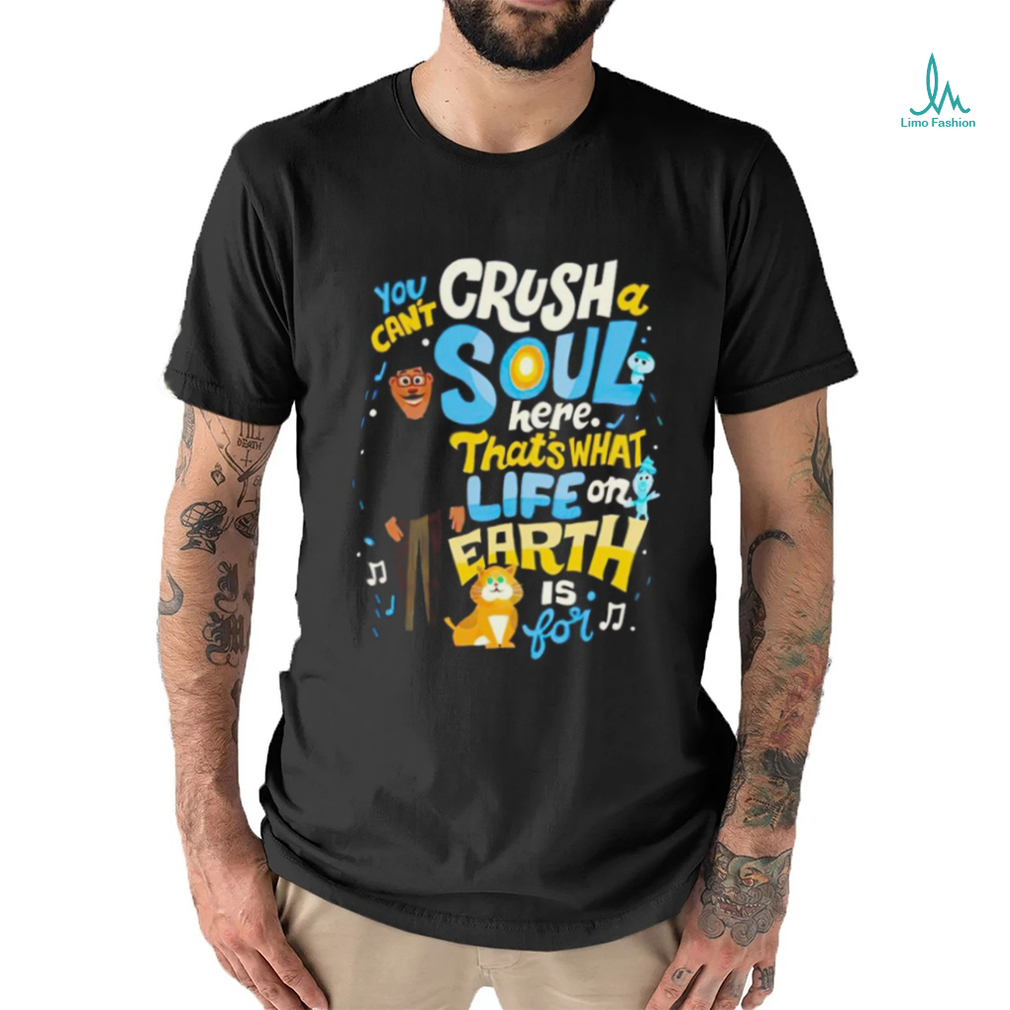You can’t crush soul here that’s what life on earth is for shirt
Old World was Lunar. Most early civilisations have a You can’t crush soul here that’s what life on earth is for shirt based calendar because it was so much easier to plot and make sense of time. It is not just China, even Scotland mesolithic era (8000 BC), in Hindu, in Islam and possibly most lost civilisations. Chinese have the lunar calendar since ancient times, and delineate as 60 years cycle. And used 12 years Zodiac and created very sophisticated system, numerology, astrological concepts around it. Almost all East Asia adopted Chinese approach, so they have in effect a common calendar and fortunately they followed China so it was so much easier for all to co-exist in synergy. Much like the whole of Europe logically followed Rome. Solar. A few like Japan after modernisation dropped lunar and adopted Western solar calendar, the Gregorian. Most Japanese don’t celebrate lunar new year anymore. For some traditional and religious festivals and rituals, I believe lunar calendar may still be referred, certainly for Buddhist rituals. Likewise Gregorian is the universal standard for the whole world and all in Asia to interact and run all the world affairs, work and business.
 ()
()You can’t crush soul here that’s what life on earth is for shirt, Hoodie, Sweater, Vneck, Unisex and T-shirt
Best You can’t crush soul here that’s what life on earth is for shirt
This Keeling Curve shows the You can’t crush soul here that’s what life on earth is for shirt in CO2 over Time. The black line shows the average throughout the year, but how about the red line? Why is it squiggly? Well if the X-axis was more descriptive, you would find that the peaks align with the Northern Hemisphere Summer and the low points align with the Northern Hemisphere Winter. Because the Southern Hemisphere has so much less land mass than the Northern Hemisphere, it also has less surface vegetation and thus its impact is less apparent than the Northern Hemisphere. The cyclical nature of the red line shows the annual dieoff and regrowth of vegetation on the surface. In affect, it can be thought of as the planet breathing, with plants taking up CO2 during warm months, and giving off CO2 when the annuals die and the perannials “hibernate” in the cold months. It also shows us something else. It shows how, even with CO2 increases, plants are nowhere near enough to counteract the amount of CO2 in the atmosphere. You would need many orders of magnitude increases in plant cover on the planet to counteract the rate of CO2 accumulation in the atmosphere-more plant growth than the planet has space for.
 ()
()CUSTOMER REVIEWS & FEEDBACK
This Flowers having a Weird Mom builds character Xmas Day T-shirt, hoodie, sweater, tank top, long sleeve, and V-neck t-shirt is a made-to-order product, It is designed by Limotees LLC. This is a limited edition product was made in the USA.
Brand: Limotees Clothing LLC, Inc. - An online fashion company in the USA
At Limotees LLC, we have provided quality T-shirts that are sure to make you feel comfortable and cool even in the scorching heat or cold weather. We also seek to provide our customers with the highest level of customer service possible by adhering to customer satisfaction policies and an open communication style. T-SHIRT FEATURES: - High quality 100% Soft cotton (fiber content may vary for different colors) UNISEX shirt. HOODIE and SWEATSHIRTS FEATURES: - 50% Cotton; 50% Polyester (fibre content may vary for different colors) - IMPORTANT: Runs true to size. Are buyers responsibility to consult the size chart before placing the order. - The design is printed on the t-shirt with a digital printer. - If you want to CUSTOMIZE more this product, please send me a message. CARE: - Machine wash, with cold water, and inside out - Tumble dry on low or hang to dry - DO not iron directly on the design ♥ HOW TO ORDER T-SHIRT, HOODIE, SWEATSHIRT , LONGSLEEVE








